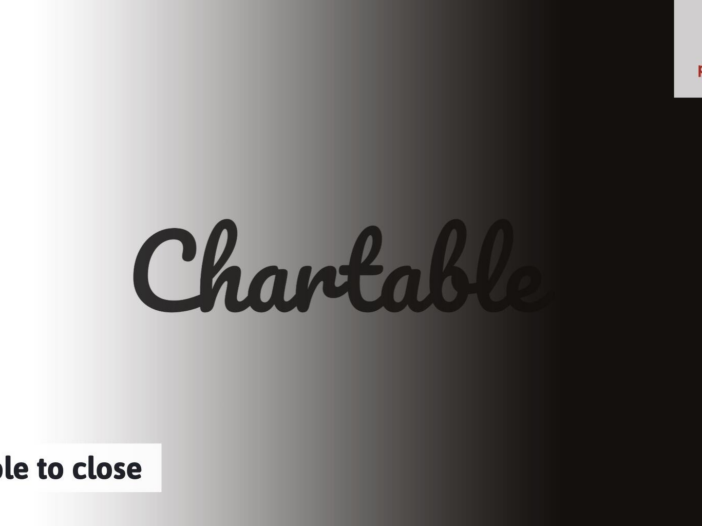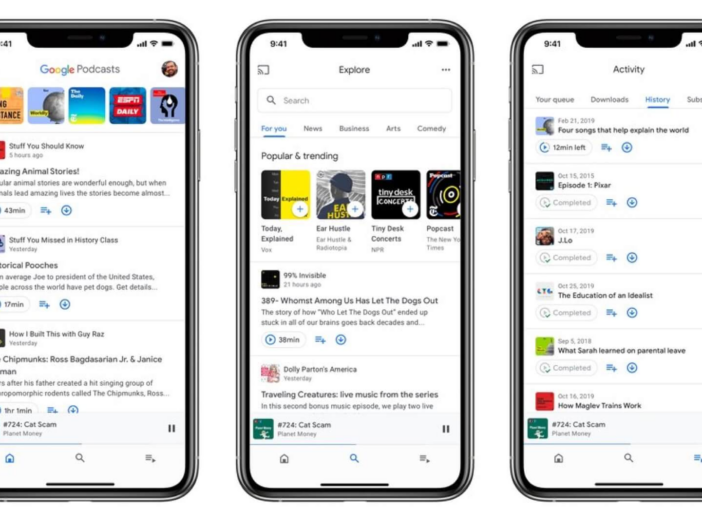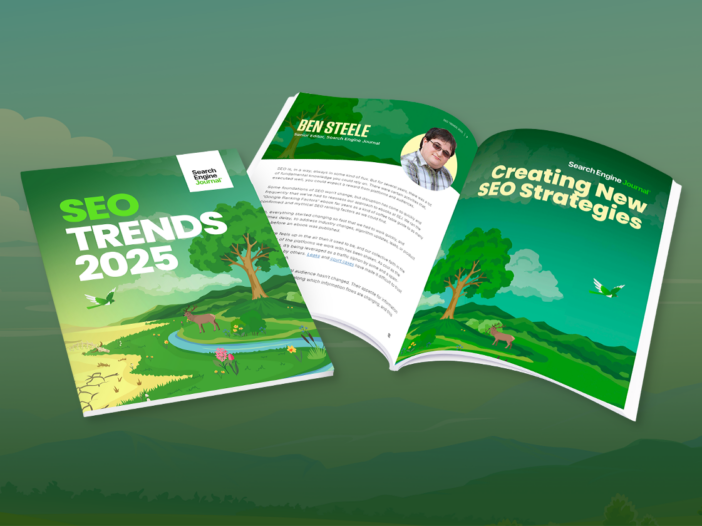Download your copy of SEO Trends 2025 and discover what to be hopeful about in a changing search world.
Maximize your SEO efforts in 2024 with insights on Google’s SGE, algorithm updates, and expert tips to keep your site ahead.
Download this guide and learn how to optimize and manage Google Performance Max campaigns, with expert insights and actionable strategies to ensure your campaigns are effective.
Join us in analyzing 3 case studies that show the importance of driving brand search behavior and engagement, and how to do it in months, instead of years.
Join us in analyzing 3 case studies that show the importance of driving brand search behavior and engagement, and how to do it in months, instead of years.
Join us as we dive into exclusive survey data from industry-leading SEOs, digital marketers, content marketers, and more to highlight the top priorities and challenges that will shape the future of search in 2025.
Real-time data from millions of search queries reveals how the Google Update is impacting AI Overviews and organic search
Enterprise SEO platform BrightEdge is actively monitoring millions of keyword search results, detecting real-time trends in Google’s AI Overview and organic search tied to the ongoing November 2024 Core algorithm update. The data suggests six preliminary observations on the direction of Google’s algorithm and what publishers and SEOs need to know now.
AI Overviews is a search feature, so any changes to Google’s core ranking algorithm will be reflected in AIO, especially because there are several ways AIO and the organic search results overlap.
One of the more interesting trends that continues this month is an overlap between the websites cited in AIO and the organic search results. This shift, first noticed in September, was highly noticeable, especially within the top ten organic search results. High ranking organic content has a high chance of becoming a citation in AIO. This trend suggests that Google is increasingly aligning AIO citations with the organic search algorithm.
How Google is aligning organic SERPs with AIO can only be speculated because Google has not commented on this trend. It may be that AIO is grounding itself in organic search results that themselves are increasingly more precisely aligned to search query topicality.
Google’s information gain patent describes a way to rank websites that closely links Google’s organic search ranking with an AI-based search interface. These trends that BrightEdge noticed align with that kind of symmetry between AI Search and organically ranked answers.
The trend for overlap between organic and AIO SERPs doesn’t manifest in shopping related queries.
But this trend doesn’t hold for shopping queries. Organic shopping SERPs and AIO results are increasingly uncoupled and going in different different directions. BrightEdge interpreted the data to mean that additional supporting results in AIO are why organic and AIO for shopping queries increasingly don’t match.
Google’s algorithm update won’t be finished until about two weeks from now. However BrightEdge’s Generative Parser technology is showing how the search results are trending that hint at what’s going on under the surface of the search results.
BrightEdge shared that ranking overlap between organic and AIO initially experienced a slight increase in volatility (+2.3%) leading into November 8th but that it subsequently started trending downward (-3.7%) on the following two days and the downward trend continued as the update was announced.
After the release of the update the volatility between organic search results and AIO began to seriously spike. BrightEdge interprets the changes as suggesting that there is a pattern of redistribution. In my opinion this may reflect changes to both AIO and organic rankings which at some point should stabilize. The scale of the changes at the lowest ranking levels (positions 21-30) indicate a high level of volatility.
It must be stressed that what BrightEdge’s Generative Parser is reporting represents real-time changes across millions of search results which are indicative of the scale of changes within the search results. BrightEdge next looks at specific industries and at this time is seeing significant shifts in e-commerce queries and notable changes in Education related queries.
Here are changes by industry:
The volatility patterns give an early tentative indication of what kinds of queries Google is giving priority in this update. Again, these are real-time results that are subject to change as new parts of the update are rolled out.
BrightEdge’s Insights From Volatility Rates:
BrightEdge gave Search Engine Journal their interpretation of what the real-time data might suggest for future AIO citations:
There’s a lot of negative sentiment to this update that is easily understandable because 2024 has been a bad year for many publishers. For example, a common complaint on X (formerly Twitter) is that Google shows too much Reddit content.
Google’s AI Overviews has not been welcomed by publishers at any level or in any industry because it’s brutal to see your content reworded by Google’s AI then added into a summary that includes reworded content from competitors, with just a tiny hard to see link for the citation.
Frank Pine, executive editor of Media News Group and Tribune Publishing (a network of 68 newspapers) was quoted earlier this year by the New York Times as remarking that Google’s AI Overviews is “cannibalizing” content and harming publishers.
The Times quoted him:
“It potentially chokes off the original creators of the content,” Mr. Pine said. The feature, AI Overviews, felt like another step toward generative A.I. replacing ‘the publications that they have cannibalized…’”
At this point in time it doesn’t do anyone good to sit around and grumble. Keep an eye on the search results to monitor changes as this update rolls out and follow the data.
Read more about the November 2024 Google Core Algorithm Update and learn more about AI Overviews here.
Featured Image by Shutterstock/Inkley Studio
I have 25 years hands-on experience in SEO, evolving along with the search engines by keeping up with the latest …
Conquer your day with daily search marketing news.
Join Our Newsletter.
Get your daily dose of search know-how.
In a world ruled by algorithms, SEJ brings timely, relevant information for SEOs, marketers, and entrepreneurs to optimize and grow their businesses — and careers.
Copyright © 2024 Search Engine Journal. All rights reserved. Published by Alpha Brand Media.
Chartable to close – Podnews
Exclusive: Spotify is to close the podcast analytics platform Chartable, as part of a re-focus at the company. Chartable users will receive an email a little later today detailing next steps. The tool, bought by Spotify in Feb 2022, offered “SmartLinks and SmartPromos” attribution tools; which we reported in 2022 were to be incorporated into Megaphone. That’s still the plan for Megaphone-hosted customers; though Spotify has also recently announced generally available attribution tools similar to SmartLinks for the Spotify app. Chartable’s co-founder Dave Zohrob left Spotify in July; Spotify’s other purchase at the time, Podsights, was integrated into Spotify Ad Analytics in June last year.
The winners of the British Podcast Awards 2024 were announced. Of the podcast-specific awards, the BBC won nine; Acast were involved in five. Audible won three awards, including podcast of the year, which went to Press Play, Turn On.
The winners of the Black Podcasting Awards 2024 were announced too. Lisa Woolfork and her show Stitch Please won three new trophies. PRX shows won eight awards.
Getting less than 1,000 downloads per episode? — Download your FREE Podcast Growth Scorecard! This tool helps you focus your podcast marketing so that you can spend your time on the marketing activities that have the most impact on podcast growth.
Subscribe to Steel Roses Podcast — A podcast launched to elevate women's voices. Real women, real talk, THIS is your weekly reminder, you are not alone and we are all in this together. Join the conversation!
Sport podcast listeners are 2.3x more likely to trust podcast adverts, compared to print and sports radio, according to new data from Sport Social.
Tom Webster look at “The Persuadables”, 20 million people in the US who don’t listen to a podcast right now, but could easily be converted – and what’s needed to get them listening.
New stats from Libsyn’s The Feed show another record low in share of downloads to Apple Podcasts.
The Podcasting Standards Project has issued an update on its work. The group is working on enhancing the “people” feature, which provides podcast credits, and a potential feature to mark shows produced by AI.
Adam Carolla is to release a new show, “Beat It Out”, as an exclusive show on Substack. You’ll need to be a paid subscriber to listen.
Google’s NotebookLM – which (in part) lets you create a podcast-like experience from uploaded articles, like this, has added a built-in YouTube uploader, and better sharing tools. Since it’s a Google product, we assume it’ll be closed in three years; but it’s an impressive tool in the meantime.
Correction: Yesterday, we got a bit confused about connecting Apple Podcasts with your NYT subscription. Just like Spotify, on Apple Podcasts you can connect these, no matter how you subscribed to The New York Times.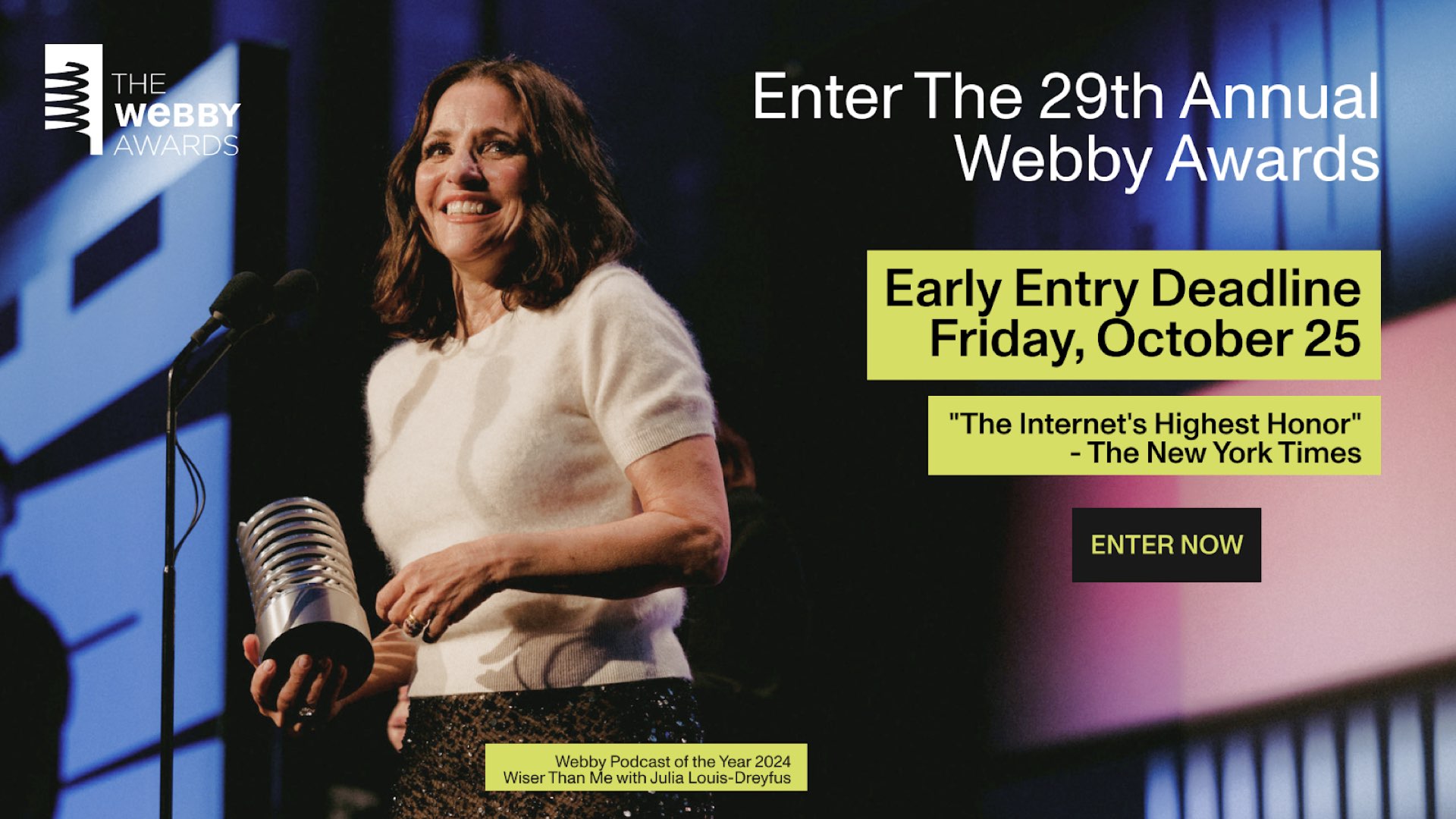
Enter The Webbys. Create Your Mark in Internet History.
Since 1996, The Webby Awards has been recognized as the preeminent international honor for Internet excellence. Last year’s Webby Awards received nearly 13,000 entries from around the world.
By participating in The Webbys, you place your work on the same stage as boundary-pushing talent, like past Webby Winners Audible, Crooked Media, iHeart Podcasts, PRX, The New York Times, The Washington Post, Lemonada Media, Wondery, and Vox Media to name a few.
New this year, Podcast honors recognizing Best Indie Podcast – Limited Run in Features, Best Creator or Influencer Series in Features, History in Individual Episodes, and the return of Podcast Company of the Year.
To take advantage of the best pricing, apply for the 29th Annual Webby Awards by the Early Entry Deadline of October 25th, 2024.
Amplify your podcast’s reach — grab Ausha’s ultimate marketing checklist to make every episode a success.
Dive into the essentials of launching a podcast on YouTube with Ausha’s resources
Why did iOS 17 have such a big effect on podcast downloads? We look at Apple’s changes in iOS 17, and what it meant for the industry.
Podcast News






Companies mentioned above:![]() Acast
Acast![]() Apple
Apple![]() Apple Podcasts
Apple Podcasts![]() Audible
Audible![]() Black Podcasting Awards
Black Podcasting Awards![]() British Podcast Awards
British Podcast Awards![]() Captivate
Captivate![]() Chartable
Chartable![]() Crooked Media
Crooked Media![]() Google
Google![]() Lemonada Media
Lemonada Media![]() Megaphone
Megaphone![]() Podsights
Podsights![]() PRX
PRX![]() Spotify
Spotify![]() Substack
Substack![]() The New York Times
The New York Times![]() The Webby Awards
The Webby Awards![]() Wondery
Wondery![]() YouTube
YouTube
#1 in Apple Podcasts 60 Minutes: A Second Look (CBS News)
Gemischtes Hack (Felix Lobrecht & Tommi Schmitt)
#1 in Spotify The Joe Rogan Experience (Joe Rogan)
Gemischtes Hack (Felix Lobrecht & Tommi Schmitt)
Over the last week, 197,187 podcasts published at least one new episode (down 1.4%). source





















































































Readers and supporters
There are new requirements to appear in Google Podcasts recommendations – Search Engine Land
sel logo
Search Engine Land » SEO » Content »
Chat with SearchBot
SearchBot:
Beginning on September 21, Google will enforce new requirements for podcasts to show in recommendations on the Google Podcasts platform, the company told podcast owners via email on Thursday. Podcasts that do not provide the required information can still appear in Google and Google Podcasts search results and users can still subscribe to them, they just won’t be eligible to be featured as a recommendation.
The new requirements. Starting on September 21, to be eligible to show as a recommendation, podcast RSS feeds must include:
More details can be found in the accompanying forum post.
Why we care. Recommendations in Google Podcasts provide greater visibility, which can help the podcasts that are able to appear there attract more listeners. Following the new requirements will help to ensure that your podcasts are eligible for those free, highly visible placements.
In addition, recommendations in Google Podcasts are personalized, so there’s a higher likelihood that, if your podcast appears as a recommendation, it’ll be more relevant to a listener’s interests, which may benefit your marketing goals.
Contributing authors are invited to create content for Search Engine Land and are chosen for their expertise and contribution to the search community. Our contributors work under the oversight of the editorial staff and contributions are checked for quality and relevance to our readers. The opinions they express are their own.
Related stories
New on Search Engine Land
About the author
Related topics
Get the newsletter search marketers rely on.
See terms.
Learn actionable search marketing tactics that can help you drive more traffic, leads, and revenue.
Online Nov. 13-14: SMX Next
Available on-demand: SMX Advanced
Available on-demand: SMX Master Classes
Discover time-saving technologies and actionable tactics that can help you overcome crucial marketing challenges.
April 15-17, 2020: San Jose
Get More Out of Your Webinars: Strategies for 24/7 Engagement
How Content is Critical to a Winning Ecommerce Strategy
ABM and AI for Marketers: Priority Use Cases for 2025
Enterprise SEO Platforms: A Marketer’s Guide
Email Marketing Platforms: A Marketer’s Guide
Customer Data Platforms: A Marketer’s Guide
The Modern Marketing Data Stack for 2025
Meet your new AI-powered marketing assistant!
Get the newsletter search marketers rely on.
Topics
Our events
About
Follow us
© 2024 Search Engine Land is a Trademark of Semrush Inc.
Third Door Media, Inc. is a publisher and marketing solutions provider incorporated in Delaware, USA, with an address 88 Schoolhouse Road, P.O. Box 3103, Edgartown, MA 02539. Third Door Media operates business-to-business media properties and produces events, including SMX. It is the publisher of Search Engine Land, the leading digital publication covering the latest search engine optimization (SEO) and pay-per-click (PPC) marketing news, trends and advice.
Kim Min Ju Confirmed To Join Seo Kang Joon And Jin Ki Joo In New Comedy Action Drama – soompi
Kim Min Ju will be joining Seo Kang Joon and Jin Ki Joo in a new comedy action drama!
On November 13, Kim Min Ju’s agency Management SOOP confirmed that Kim Min Ju will be joining the cast of MBC’s upcoming Friday-Saturday drama “Undercover High School” (literal title).
“Undercover High School” is a comedy action drama about Jung Hae Sung (Seo Kang Joon), who goes undercover as a high school student while hiding his identity as an agent of the National Intelligence Service (NIS) in order to chase the whereabouts of Emperor Gojong’s gold bullion. As he navigates school life, he builds solidarity and bonds with his classmates. In addition to Seo Kang Joon, Jin Ki Joo, Yoon Ga Yi, and Kim Shin Rok are also confirmed to star in the drama.
Kim Min Ju will be playing the role of Lee Ye Na, the only daughter of the chairman of the prestigious Byeongmun High School and the student council president. Lee Ye Na always secures first place in various competitions, schoolwork, and popularity polls, but she desperately struggles to earn the approval of her mother Seo Myung Joo (Kim Shin Rok), who is the real power behind the school.
In addition to starring in “The Forbidden Marriage” and “Connection,” Kim Min Ju recently impressed in her latest film “Hear Me: Our Summer,” raising anticipation for her next transformation.
“Undercover High School” is slated to premiere in 2025. Stay tuned for more updates!
While waiting, watch Kim Min Ju in “Connection” below:
Watch Now
Also watch Seo Kang Joon in in “I’ll Go to You When the Weather is Nice”:
Watch Now
Source (1)
Mangools vs Semrush: Detailed Comparison for 2024 – 01net
SEO Trends For 2025 – Search Engine Journal
Download your copy of SEO Trends 2025 and discover what to be hopeful about in a changing search world.
Maximize your SEO efforts in 2024 with insights on Google’s SGE, algorithm updates, and expert tips to keep your site ahead.
Download this guide and learn how to optimize and manage Google Performance Max campaigns, with expert insights and actionable strategies to ensure your campaigns are effective.
Join us in analyzing 3 case studies that show the importance of driving brand search behavior and engagement, and how to do it in months, instead of years.
Join us in analyzing 3 case studies that show the importance of driving brand search behavior and engagement, and how to do it in months, instead of years.
Join us as we dive into exclusive survey data from industry-leading SEOs, digital marketers, content marketers, and more to highlight the top priorities and challenges that will shape the future of search in 2025.
We’ve asked six industry experts to share their insights into the strategies shaping SEO this year and the emerging trends on the horizon.
If there’s one thing that became clear throughout 2024, it’s that SEO volatility isn’t temporary.
Working with less traffic is the new normal as Google and Microsoft forge ahead with AI integrated into their search engines.
The meaning of the word “search engine” seems to be changing, too.
Some audiences use social media platforms, such as TikTok, like search engines, and complete the same kinds of informational and transactional journeys.
Google’s business practices have been under heightened scrutiny this year. Trials and leaks have revealed information about its algorithms and business models.
At the same time, many users and publishers have drawn attention to declining search results quality.
Doing SEO is tough right now.
Google’s rules and guidelines don’t seem to be applied evenly, with spammy tactics working out just fine if you’re big enough and legitimate smaller websites getting pushed out.
We’re all wrestling with the fact that lower traffic is just a thing now.
And yet, the vibe from many of the contributors to this year’s SEO Trends ebook is hopeful.
What are the reasons for excitement and hope in such a difficult time?
The thing about user dissatisfaction is that they look for new avenues and platforms. Changing audience behavior means new opportunities.
And Google’s troubles in the courts could open up room for new, competitive platforms to gain market share. Google is still the dominant force in search, but in the coming years, there may be shifts in platforms as well as audiences.
This year’s contributors are:
This year’s questions focus on the big picture: how to approach SEO, given all the developments and disruptions.
Instead of focusing on an individual technology or event, we asked the contributors to discuss how they think about the definition and effectiveness of SEO and its many strategies and tactics.
Here are the questions we asked:
The desire for information isn’t going away, but users are changing how they seek information.
In the past, SEO pros answered questions in order to lure in users. That might still be the case, but people are finding answers outside of the SERP (or staying in the SERP) for answers rather than going to websites.
Is that model broken completely, or is there still something to gain from it?
Alternatively, is there a more direct way for SEO professionals to find users that doesn’t involve pumping information onto the internet?
Is there a completely new way of doing things in SEO, or do we need to work within the wreckage that we have?
Are there other channels that you recommend for user acquisition strategy? How can SEO pros effectively integrate these new channels into their overall approach?
What are the trends and technologies that SEO professionals should be aware of and/or using?
What skills and knowledge do SEO professionals need to develop to thrive in the current search and marketing environment?
Are there any predictions you would like to make?
We feel there should always be an open question so that the contributors can talk about whatever is most pressing on their minds without specific prompting.
So, question three was a “free space” – an opportunity to talk about whatever they wanted.
As usual, the contributors don’t disappoint with their insightful thoughts, both to the prompted questions and to the open invitation.
Going into 2025, a lot is still up in the air, and the state of Google Search doesn’t seem likely to improve quickly.
The expert contributors to SEJ’s SEO Trends ebook have plenty to say about the direction of search and how to build agile, resilient SEO strategies in a tumultuous business climate.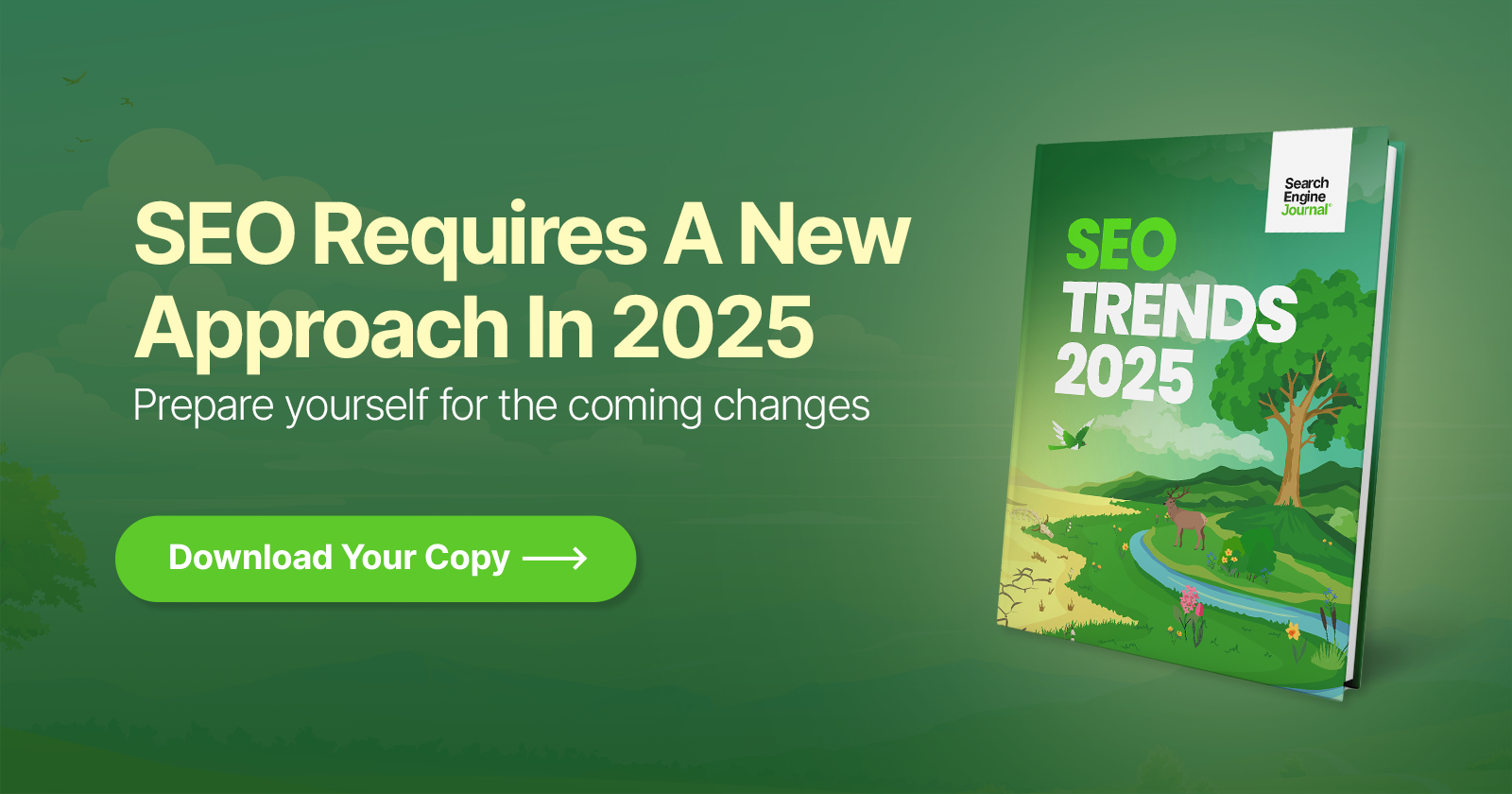
Featured Image: Paulo Bobita/Search Engine Journal
SEO content writer and editor for 6+ years. Formerly a live theater professional. Bumbling through fatherhood. I’m fascinated by how …
Conquer your day with daily search marketing news.
Join Our Newsletter.
Get your daily dose of search know-how.
In a world ruled by algorithms, SEJ brings timely, relevant information for SEOs, marketers, and entrepreneurs to optimize and grow their businesses — and careers.
Copyright © 2024 Search Engine Journal. All rights reserved. Published by Alpha Brand Media.

